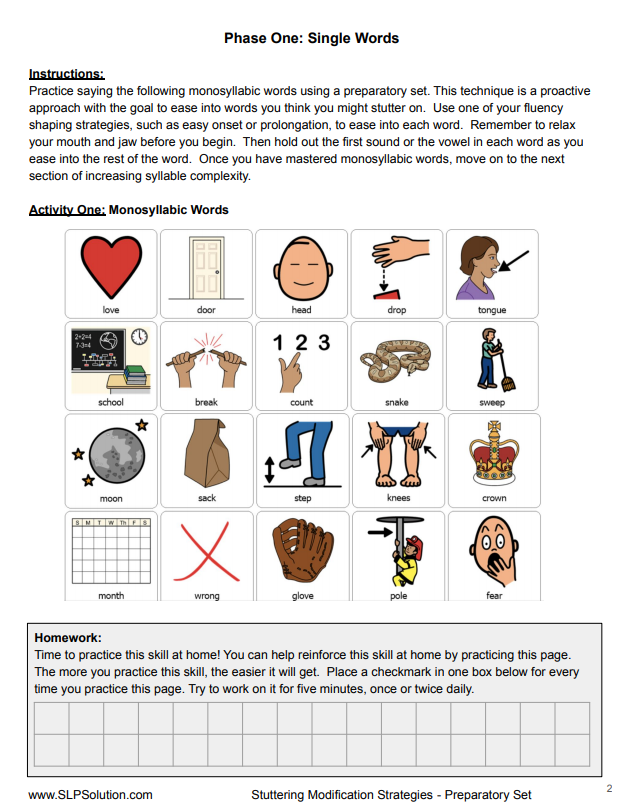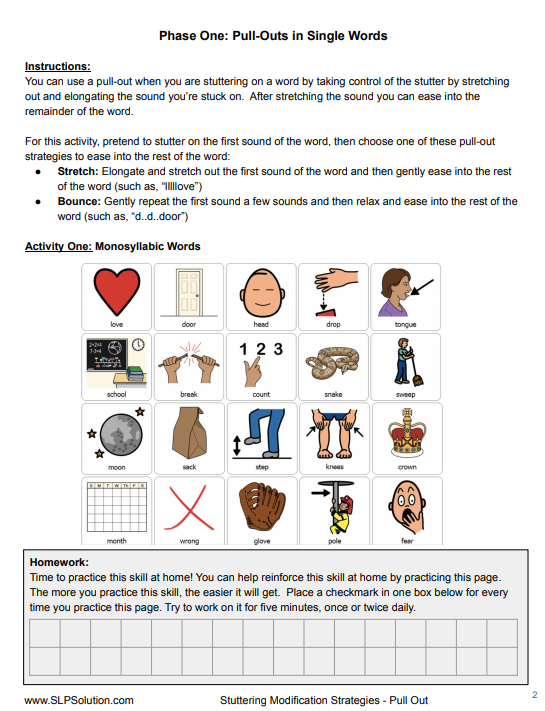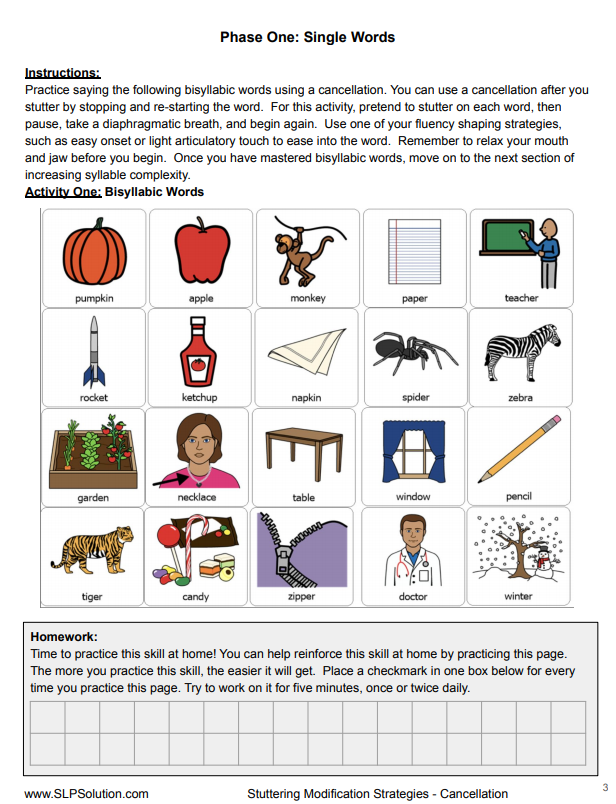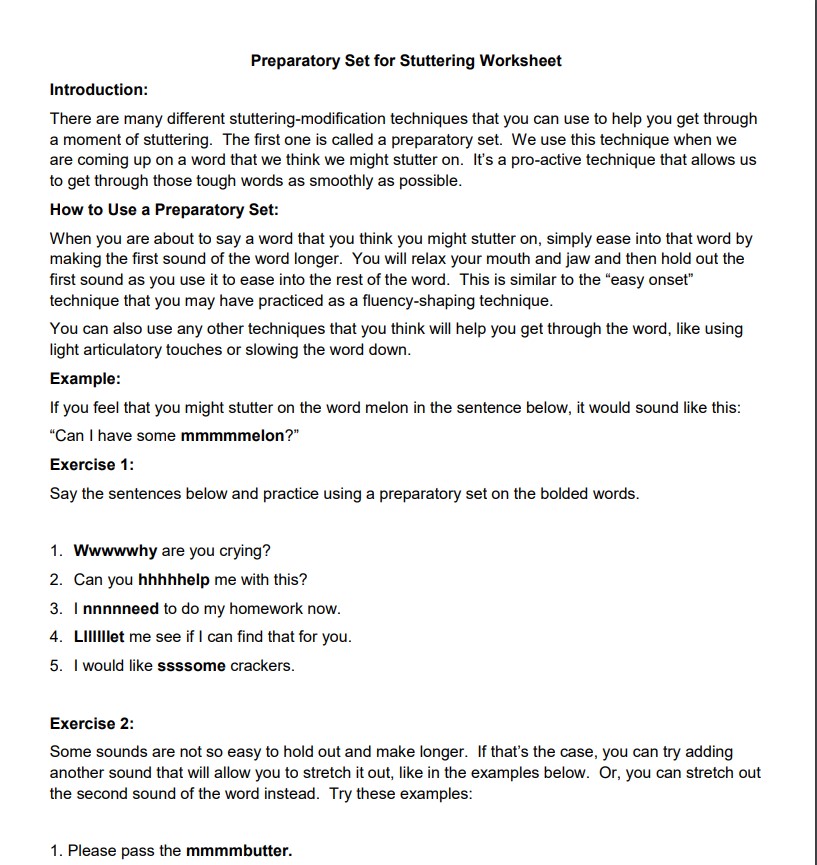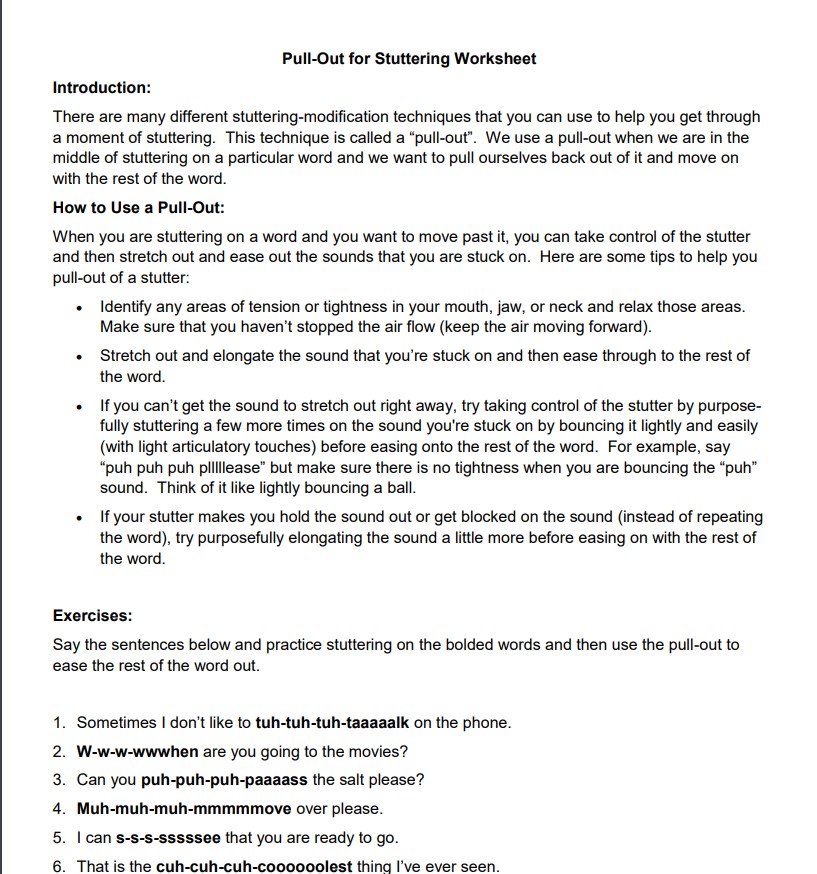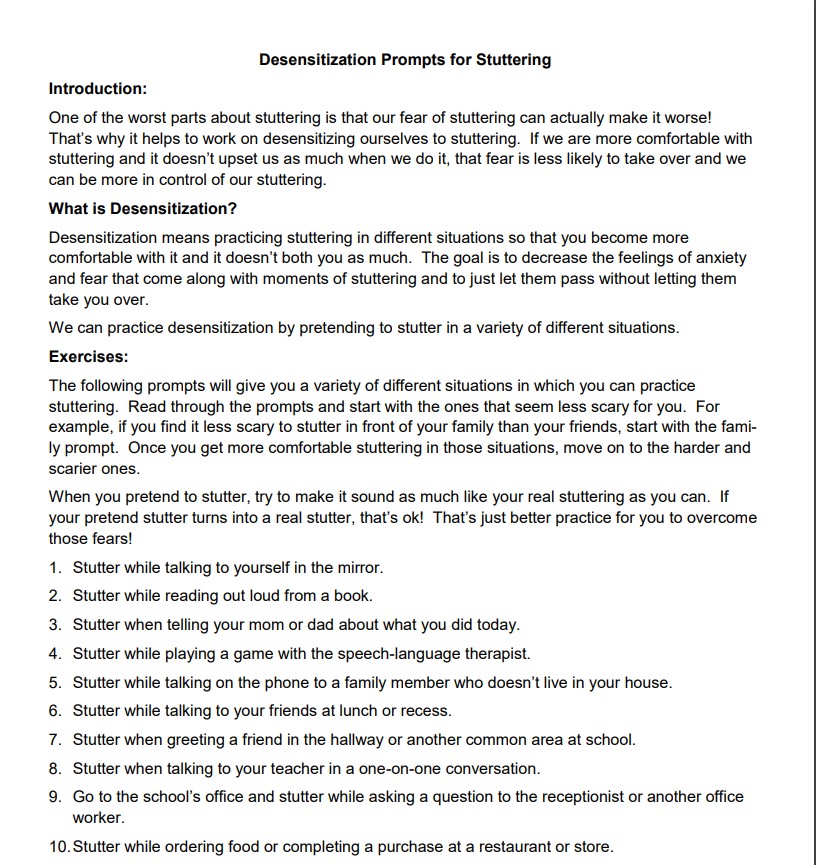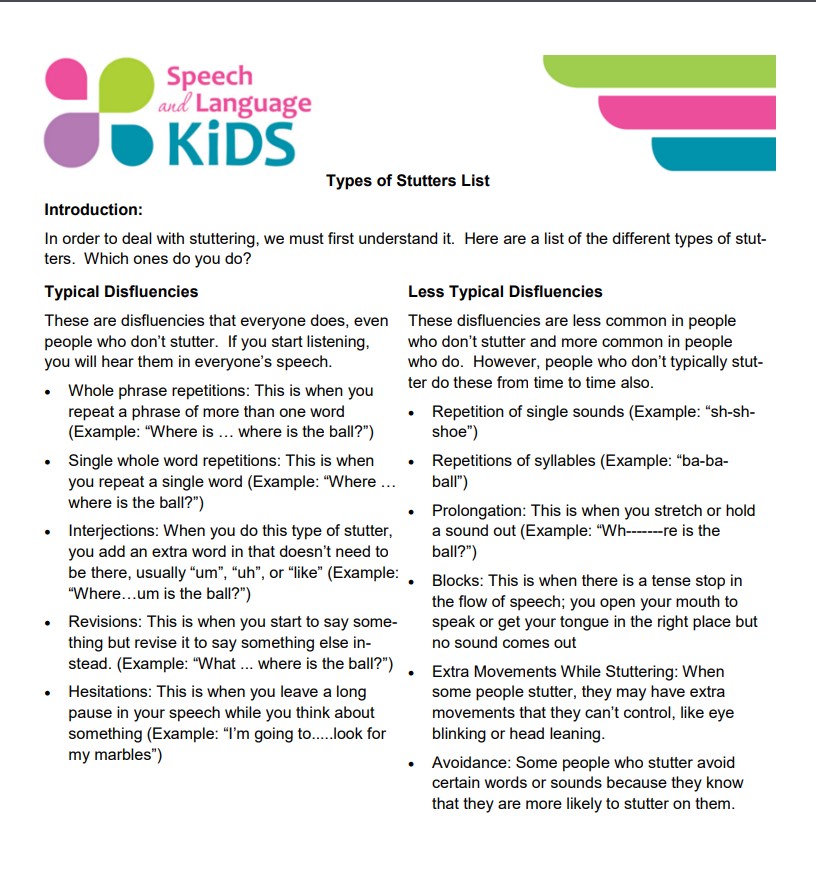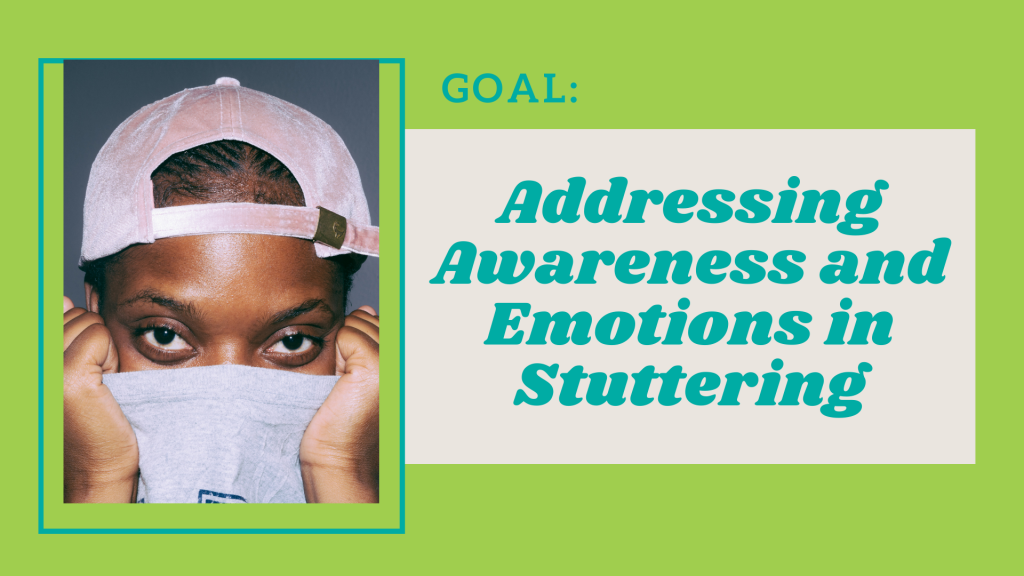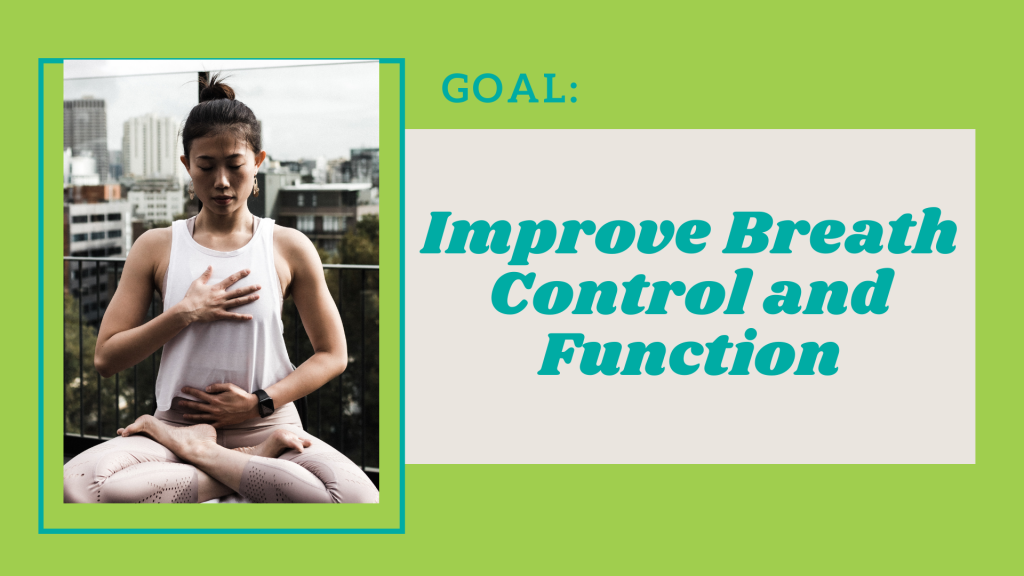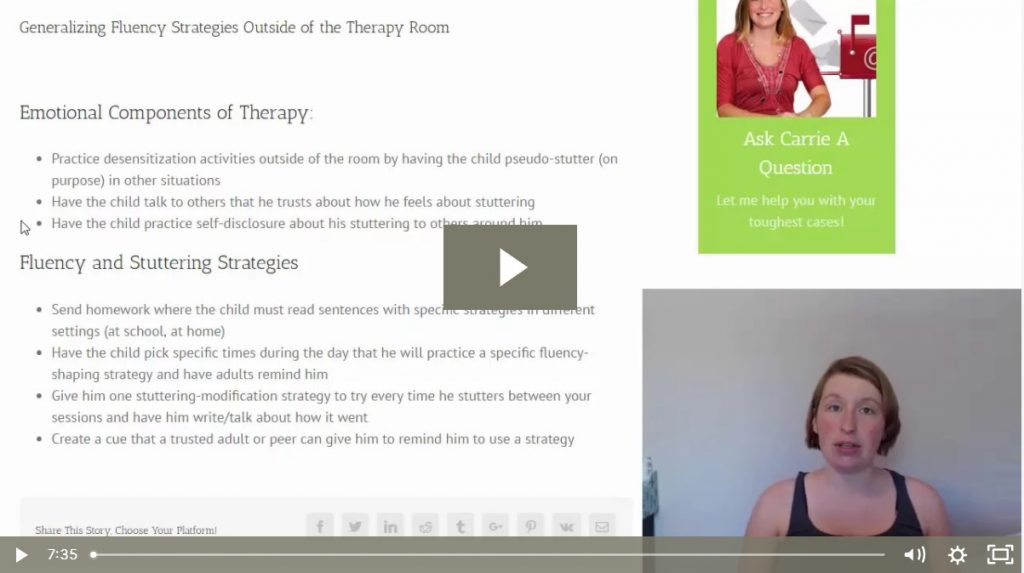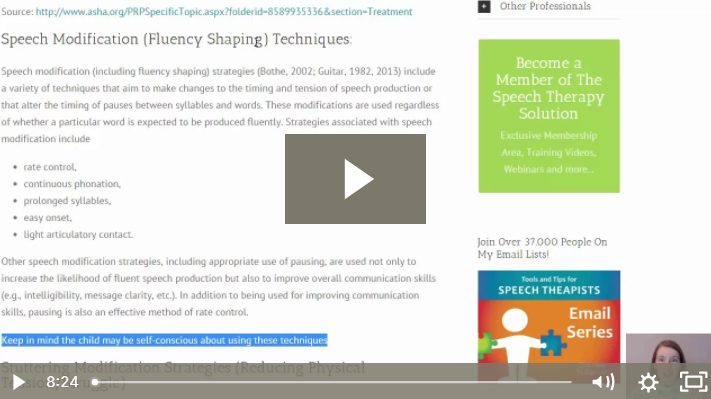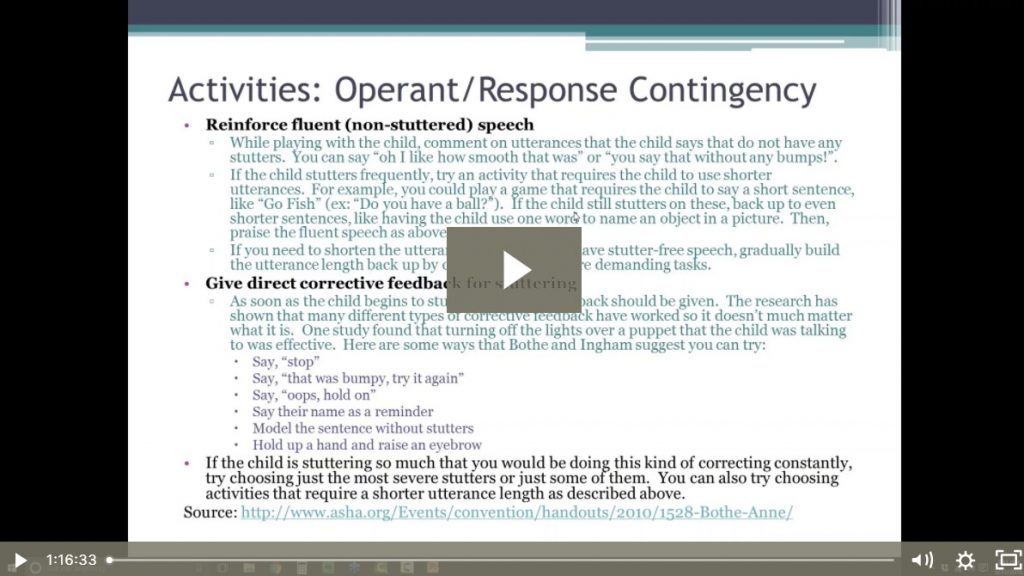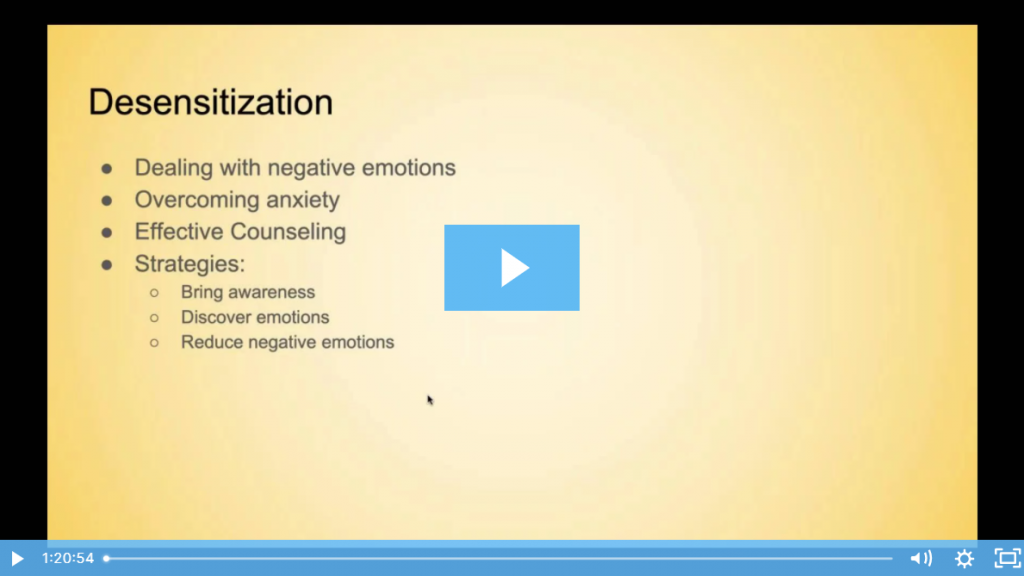Goal: Use Stuttering Modification Strategies to Move Past Moments of Stuttering
Stuttering modification strategies, originated by Van Riper (1973), aim to reduce associated physical tension and struggle by helping children to identify core stuttering behaviors, recognize physical concomitant behaviors, locate the point of physical tension and struggle during moments of disfluency, and ultimately reduce that physical tension.
- Preparatory set (before stutter)
- Pull-out (during stutter)
- Cancellation (after a stutter)
(Source: http://www.asha.org/PRPSpecificTopic.aspx?folderid=8589935336§ion=Treatment)
We can teach our clients how to use these stuttering modification techniques to help them through moments of stuttering. Our goal is to teach the client all of these and let him choose which one he needs in each moment of stuttering.
Sample Goal:
Client will demonstrate the ability to independently use stuttering modification strategies (as needed) during 4 out of 5 structured conversation tasks in the therapy room with zero clinician prompts.
Download the No-Prep Therapy Kit:
We have a start-to-finish therapy kit that will give you everything you need to practice this skill in therapy and send home homework. Click the packet below to open it. Then, print it out and place it in the child’s notebook or binder.
Therapy Phases:
- Learn About the Speech Mechanism: Student will be able to describe the basic structures and functions of the speech mechanism system, including how the breath works together with the larynx and articulators to produce speech.
- Practice Stuttering Modification Techniques in Structured Tasks: Student will demonstrate use of the stuttering modification techniques in a controlled, structured task in the therapy setting.
4. Generalize Stuttering Modification Techniques in Other Environments: Student will demonstrate use of the stuttering modification techniques in natural conversations in a variety of other settings. Click Here to View the Generalizing Skills Workbook
Supplemental Materials
Here are some other resources that may help you when working on this skill:
(Use Before Anticipate Stutter)
(Use In the Middle of a Moment of Stuttering)
(Use at the End of a Moment of Stuttering)
Desensitization Prompts Worksheet
Once your client can use these quickly and easily during conversations in the therapy room, start practicing them in increasingly more difficult situations. Have him use them in a conversation with the secretary in the office, or when relaying a message to the school librarian.
A list of the different types of disfluencies along with therapy activity ideas for every level.
Improving Awareness of Stuttering and Addressing Negative Emotions
Help for children who aren’t aware of their stuttering or who are being affected by negative emotions of their stuttering.
Improving Breath Control and Function for Voice or Fluency Therapy
Help for children who are struggling to coordinate breathing with their speech.

